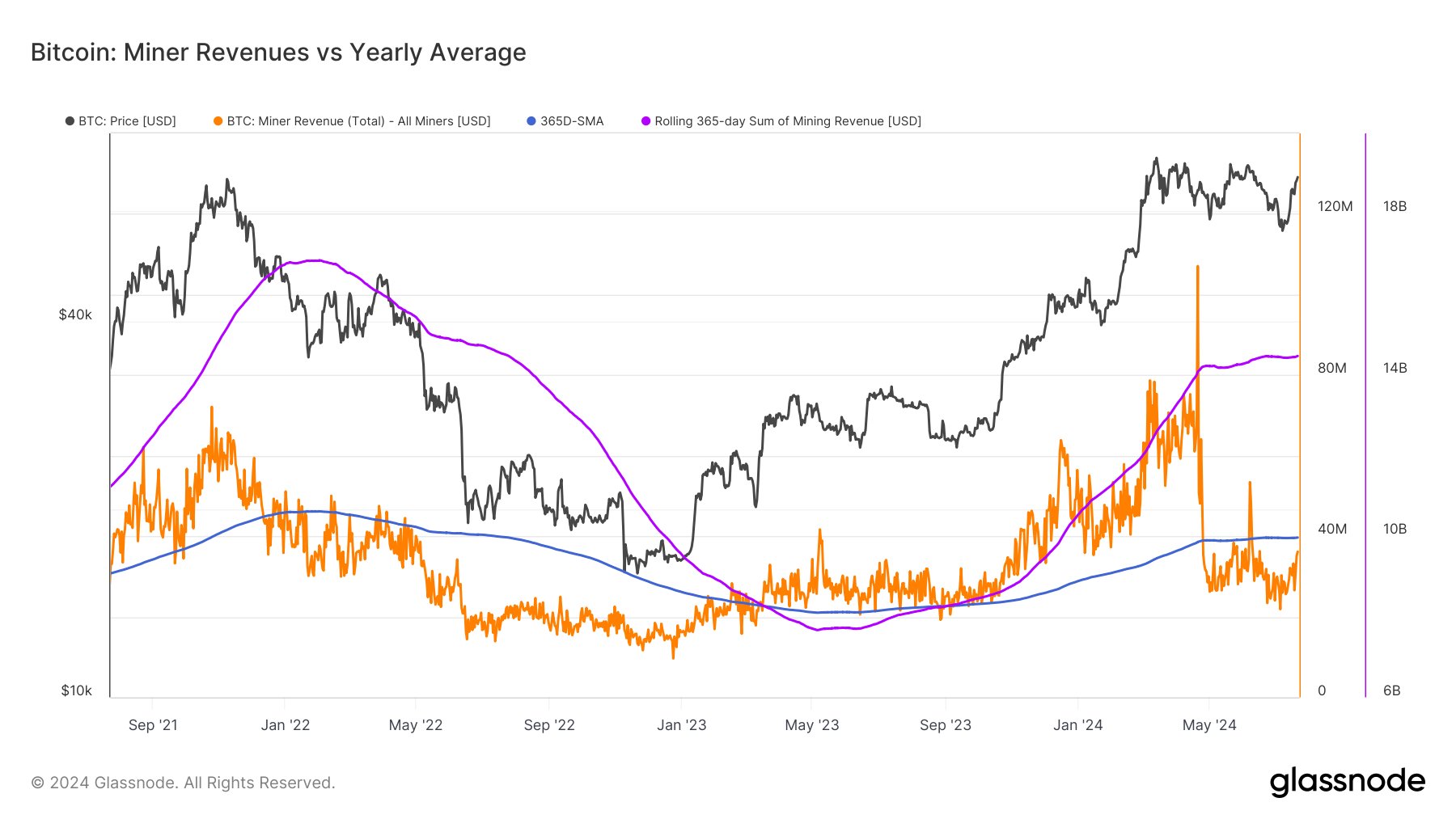On-chain data shows the Bitcoin mining revenue has neared its yearly average, a sign that capitulation could be coming to a close for miners.
Bitcoin Miner Revenue Is Now Close To Its 365-Day SMA
In a new post on X, analyst James Van Straten has discussed about how the situation of the BTC miners is looking like right now. There are different ways to gauge the condition of the miners, with a popular one being the hashrate, which is a measure of the total computing power connected to the Bitcoin network.
Here, though, the analyst has made use of the daily total revenue of these chain validators. There are two parts to miner revenue: block subsidy and transaction fees.
The first of these refers to the BTC rewards that miners receive as compensation for solving blocks on the network, while the latter one is the payment users bundle with individual transactions. Historically, the block subsidy has made up for a much more significant part of the miner revenue than the transaction fees.
The below chart shows how the combined Bitcoin miner revenue has changed over the last few years.
As displayed in the above graph, the Bitcoin miner revenue had started climbing alongside the price rally that kicked off back in October of last year and had achieved a new all-time high (ATH) by April of this year.
This increase had occurred due to two reasons. First, the block subsidy, which is given out in BTC, is generally fixed in both value and periodicity, so the only variable related to it is the asset’s USD price. As such, it makes sense that the revenue would go up when the price rallies.
At the same time, the network also became busy, due to the increased bull market traffic. The transaction fee is dependent on the blockchain conditions, since there is only limited space available in blocks. This space naturally becomes more expensive as competition for transfers increases.
The spike to the ATH revenue, in particular, was fueled by the arrival of Runes, which is a new technology on the chain that allows users to mint fungible tokens. Transactions related to Runes are similar to any other on the network, so they also affect network economics.
From the chart, it’s visible that the miner revenue had registered a sharp plunge right after this ATH, with its value sinking below the 365-day simple moving average (SMA).
The reason behind this was the fourth Halving. While block rewards stay fixed in value for most of the time, there is an exception in the form of Halving events. These periodic events, which occur every four years, permanently shave off these rewards in half, thus drastically shaking up miner revenue.
Since this drop, the Bitcoin mining revenue has stayed under the 365-day SMA, which has put many miners under pressure and forced some of them into capitulating.
With the latest recovery, though, the miner revenue has risen to $35 million, which isn’t far from the $40 million yearly average. “This is another way to show the miner capitulation is almost over,” explains Van Straten.
If the metric can manage to reclaim the 365-day SMA, then Bitcoin could continue to trend higher, according to the analyst.
BTC Price
Bitcoin has stalled in its recovery as its price is still trading around the $66,200 level.






